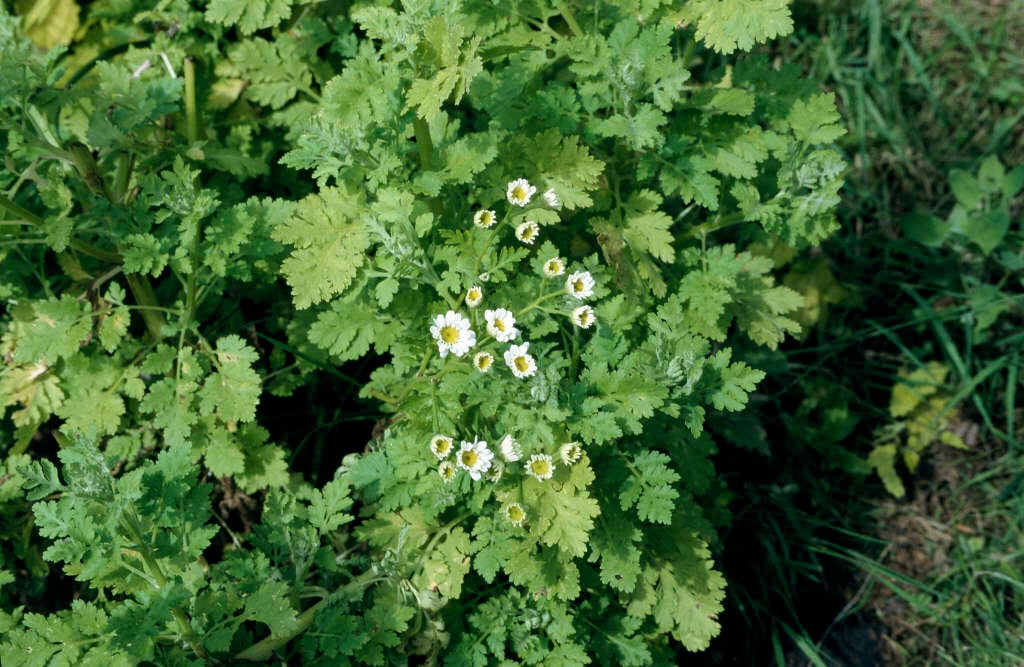Tanacetum parthenium
feverfew
A short-lived bushy perennial with pungently aromatic, ovate, pinnately lobed leaves and daisy-like flowerheads 2.5cm across, with white rays and yellow disk florets in summer
Size
Ultimate height
0.1–0.5 metresTime to ultimate height
2–5 yearsUltimate spread
0.1–0.5 metresGrowing conditions
Moisture
Well–drainedpH
Acid, Alkaline, NeutralColour & scent
| Stem | Flower | Foliage | Fruit | |
| Spring | Green | |||
|---|---|---|---|---|
| Summer | White Yellow | Green | ||
| Autumn | Green | |||
| Winter |
Position
- Full sun
Aspect
South–facing or West–facing or East–facing
Exposure
Exposed or Sheltered Hardiness
H6Botanical details
- Family
- Asteraceae
- Native to GB / Ireland
- Yes
- Foliage
- Deciduous
- Habit
- Bushy
- Potentially harmful
- Contact may irritate the skin. Wear gloves and other protective equipment when handling
- Genus
Tanacetum can be annuals, evergreen or herbaceous perennials or sub-shrubs, with simple or pinnately divided leaves and solitary or clustered, terminal, daisy-like or button-like flower-heads
- Name status
Correct
- Plant range
- Balkans
How to grow
Cultivation
Grow in any light, well-drained soil in full sun. Will not tolerate heavy, wet soils
Propagation
Propagate by seed sown in situ in spring, division or take basal cuttings
Suggested planting locations and garden types
- Cottage and informal garden
- Wildlife gardens
- City and courtyard gardens
- Flower borders and beds
Pruning
Cut back after flowering. Deadhead to prevent excessive self-seeding
Pests
May be susceptible to aphids, leaf and bud eelworms and leaf-mining flies
Diseases
Generally disease-free
Get involved
The Royal Horticultural Society is the UK’s leading gardening charity. We aim to enrich everyone’s life through plants, and make the UK a greener and more beautiful place.
